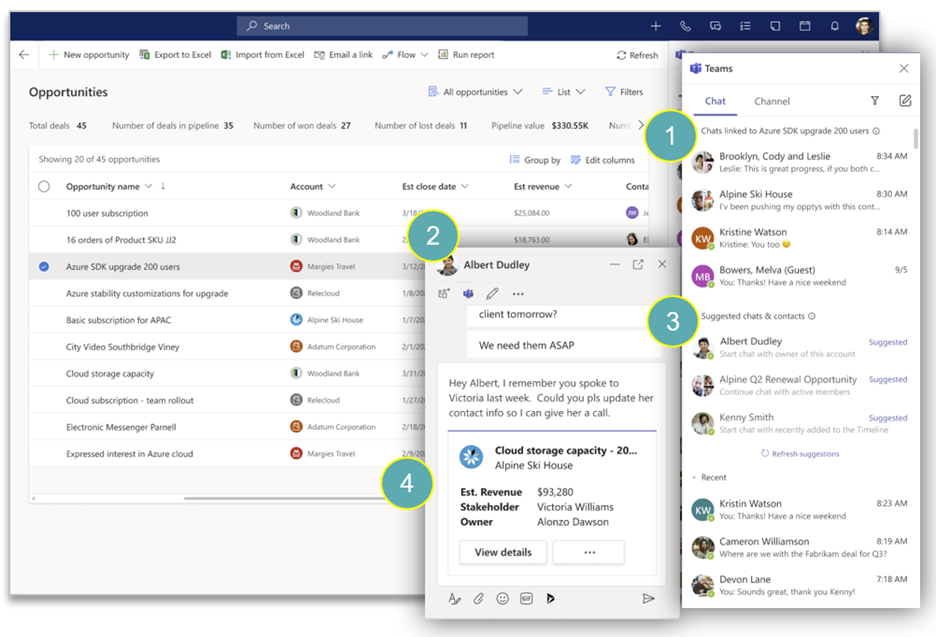Teams from different departments unite to form a cross-functional collaboration, aiming for common goals. This system enhances workflow automation, boosting team agility and project execution. Moreover, it sets up a transparent communication framework, which encourages knowledge exchange and fosters a cooperative spirit among team members.
Benefits of Cross-Functional Teams
Cross-functional collaboration brings a surge in creativity, streamlines problem-solving, and bolsters interdepartmental cooperation. Under the guidance of a project manager, this project-centric collaboration aligns the team, propelling the organization’s efficiency and productivity forward.
Introduction to Cross-Functional Teams
The essence of cross-functional collaboration lies in diverse departments working in unison to fulfill mutual objectives. It demands a steadfast commitment to open communication, interdepartmental synergy, and project-focused teamwork. Typically, a project manager leads a cross-functional team, comprising members from various sectors, to enhance project outcomes.
Workflow automation, a shared collaborative ethos, and nimbleness are the pillars of successful collaboration. These elements are pivotal in elevating both the efficiency and the impact of cross-functional teamwork.
Defining Cross-Functional Teamwork

At its core, cross-functional collaboration is a strategic alliance of team members from distinct functional domains, united by common aims. It’s instrumental in fostering interdepartmental communication, sharing insights, and maintaining transparency.
A project manager often spearheads a cross-functional team, ensuring cohesive efforts and streamlined project delivery.
This collaborative model leverages the diverse talents of team members, nurturing team agility through effective workflow automation. It cultivates a culture of cooperation, laying the foundation for a robust collaborative ecosystem that enhances project-centric teamwork.
Key Elements of Cross-Functional Collaboration
A pivotal component of cross-functional collaboration is the collective mindset of team members. This mindset embodies a readiness and enthusiasm for joint efforts towards collective goals, creating an atmosphere ripe for teamwork.
Transparent communication is vital, keeping all stakeholders, including the project manager, abreast of changes in project execution. Workflow automation further empowers team agility and task management efficiency.
In conclusion, project-focused collaboration and the exchange of knowledge not only solidify team unity but also encourage interdepartmental cooperation, which is essential for any cross-functional group.
The Importance of Cross-Functional Collaboration
Cross-functional collaboration is crucial to achieving shared objectives in modern companies. A collaborative system fosters a teamwork-oriented atmosphere, supporting a collaborative mindset. This aids in the enhancement of team alignment and project-based collaboration among team members, leading to more effective project execution.
Furthermore, workflow automation and transparent communication foster interdepartmental collaboration. It significantly improves knowledge sharing and encourages team agility. The role of the project manager becomes easier and more productive when a cross-functional team collaborates effectively.
Benefits of Cross-Functional Collaboration for Agencies
Cross-functional collaboration brings together team members from different fields enhancing a collaborative mindset, leading to shared objectives and improved project execution. This model of interdepartmental collaboration promotes transparent communication and knowledge sharing. It enables team alignment and agility, fostering a dynamic and effective collaborative system.
Moreover, this kind of project-based collaboration can be further boosted by workflow automation, which simplifies tasks, reduces errors and allows project managers to focus on strategic areas. Cross-functional collaboration is indeed instrumental for agencies striving to enhance their team collaboration and overall productivity.
Challenges in Cross-Functional Collaboration
Collaboration within a cross-functional team can pose several challenges. Without a genuine collaborative mindset, team members may struggle to adapt to changes in project execution and team agility, impacting the efficiency of workflow automation. A lack of shared objectives and transparent communication can create misunderstanding, leading to misalignment within the team.
Moreover, ineffective interdepartmental collaboration may hinder the seamless flow of information and knowledge sharing, thereby affecting the project outcomes. Thus, it becomes essential for a project manager to build a robust and efficient collaborative system promoting project-based collaboration among all team members.
Overcoming Barriers to Cross-Functional Collaboration
Overcoming barriers to cross-functional collaboration involves fostering a collaborative mindset among team members and promoting transparent communication at every level. This can be achieved by implementing a collaborative system that involves workflow automation and project-based collaboration, ensuring team alignment towards shared objectives.
Project managers play a key role in bolstering interdepartmental collaboration and knowledge sharing, thus facilitating project execution and enhancing team agility. By promoting these practices, organizations can harness the full potential of their cross-functional team and achieve their strategic goals.
Strategies for Effective Cross-Functional Collaboration
To achieve effective cross-functional collaboration, focus on establishing a collaborative system that fosters team alignment and interdepartmental cooperation.
Here’s how:
- Shared Objectives and Knowledge Sharing: Lay out shared objectives clearly. Encourage knowledge sharing among team members to leverage diverse expertise.
- Promote a Collaborative Mindset: Cultivate a collaborative mindset within the team. Emphasize the importance of working together toward common goals.
- Workflow Automation: Integrate workflow automation to streamline project execution. This minimizes redundancy, maximizes efficiency, and enhances team collaboration.
- Transparent Communication: Ensure everyone, including the project manager, understands the project-based collaboration and their roles. Transparent communication is essential for success.
Building a Collaborative Culture
Creating a collaborative culture involves fostering a collaborative mindset and transparent communication:
- Collaborative Mindset: Encourage team members to embrace collaboration. A cooperative spirit enhances teamwork and alignment.
- Workflow Automation: Implement systems that facilitate collaboration and interdepartmental cooperation. This boosts project execution and aligns the team.
Effective Communication in Cross-Functional Teams
Successful cross-functional team management relies on effective communication:
- Collaborative Mindset: Foster transparent communication among team members. A shared ethos ensures alignment and promotes knowledge exchange.
- Workflow Automation: Use automation to clarify shared objectives and increase team agility. It simplifies project-based collaboration.
Role of Leadership in Fostering Collaboration
Strong leadership is crucial for a collaborative environment:
- Transparent Communication: Leaders play a pivotal role in promoting transparent communication, shared objectives, and interdepartmental collaboration.
- Workflow Automation: They guide cross-functional teams, facilitating knowledge sharing and team alignment. This results in increased agility and productivity.
Tools for Cross-Functional Collaboration
Effective cross-functional collaboration in a project heavily relies on the use of modern tools. A collaborative system empowers transparent communication among team members, fostering a collaborative mindset. Workflow automation further enhances project execution by ensuring team alignment and increasing team agility.
Project-based collaboration tools facilitate knowledge sharing, promoting shared objectives among the cross-functional team. The project manager plays a pivotal role in steering interdepartmental collaboration, thus creating a powerful synergy for the successful execution of projects.
Using Slack for Cross-Functional Collaboration
Slack is an efficient collaborative system that encourages a collaborative mindset among team members for enhanced project-based collaboration. With Slack, workflow automation becomes more streamlined, enriching the interdepartmental collaboration in every project execution. This software enhances transparent communication, team alignment and information accessibility, facilitating knowledge sharing across cross-functional teams.
Through features like channels and integrations, shared objectives become more visible to everyone, promoting a sense of team collaboration and leading to improved team agility. For a project manager, Slack offers a platform to monitor and manage tasks effectively, making it an essential tool for every cross-functional team.
Enhancing Collaboration with Microsoft Teams

Enhancing collaboration in project-based work becomes seamless with Microsoft Teams, a tool designed to foster a collaborative mindset among team members. With this collaborative system, team alignment around shared objectives is achieved easier through transparent communication and knowledge sharing.
From the project manager's perspective, workflow automation aids in more efficient project execution, particularly with a cross-functional or interdepartmental team. Thanks to Microsoft Teams' capability, teams can maintain a desired level of team agility, enhancing overall team collaboration.
Project Management with Asana
With Asana, project management becomes a breeze. This collaborative system nurtures a solid project-based collaboration, fostering a collaborative mindset among team members. Asana leverages workflow automation for efficient project execution, promoting crystal-clear, transparent communication that ultimately results in shared objectives.
Specially geared for interdepartmental collaboration, Asana enhances team alignment and facilitates knowledge sharing among cross-functional teams. Thus, adding to the team agility and ensuring your project manager can seamlessly coordinate every aspect of the project.
Measuring the Success of Cross-Functional Collaboration
Measuring the success of cross-functional collaboration relies on several key factors.
A collaborative mindset is essential in team members, encouraging transparency in communication and fostering knowledge sharing across the team. Further, interdepartmental collaboration must be cultivated under the guidance of a skilled project manager, to provide a successful collaborative system.
Other significant elements to consider include shared objectives, workflow automation, and team agility. These elements act as measures of team alignment and bolster efficient project execution. Furthermore, project-based collaboration nurtures the growth of a cross-functional team.
Key Performance Indicators for Cross-Functional Collaboration
The effectiveness of cross-functional collaboration can be measured through several Key Performance Indicators (KPIs). An efficient collaborative system is one KPI that is pivotal for effective team collaboration. This system aids in workflow automation, smoothens project execution, and enhances team agility by enabling faster decision-making.
Another vital KPI is the level of transparent communication within the team. It fosters a trustworthy environment, promotes shared objectives, and facilitates knowledge sharing amongst team members.
Lastly, the degree of team alignment, especially during project-based collaboration, determines the efficiency of interdepartmental collaboration. This KPI must be closely monitored by the project manager to ensure the team’s collaborative mindset leads to success.
Conclusion: The Future of Cross-Functional Collaboration
The future of cross-functional collaboration is promising and crucial for organizational success. A collaborative mindset, transparent communication, and workflow automation will be key elements in achieving shared objectives.
Project managers will maximize project execution by cultivating a cross-functional team that values knowledge sharing and team agility. Advanced project-based collaboration and interdepartmental collaboration will enhance team alignment and foster a robust collaborative system.
Without a doubt, each team member's contribution will be of high value to the future of cross-functional collaboration.







